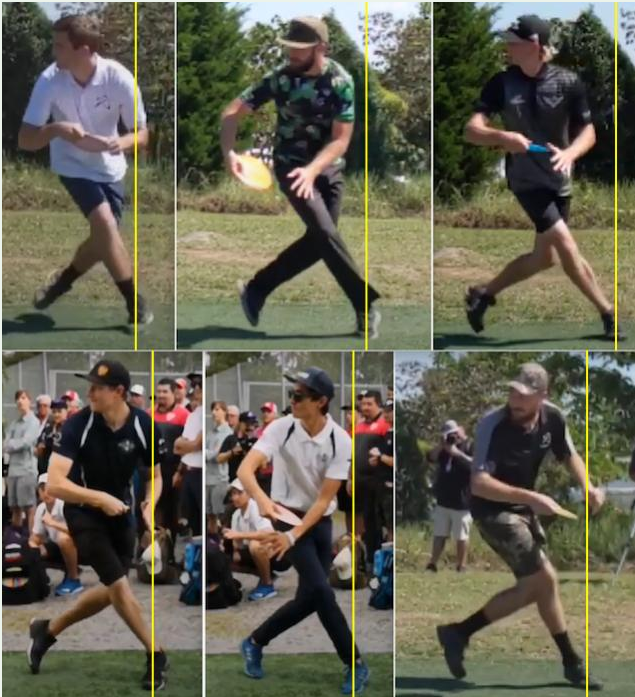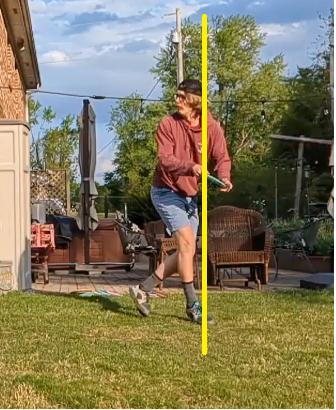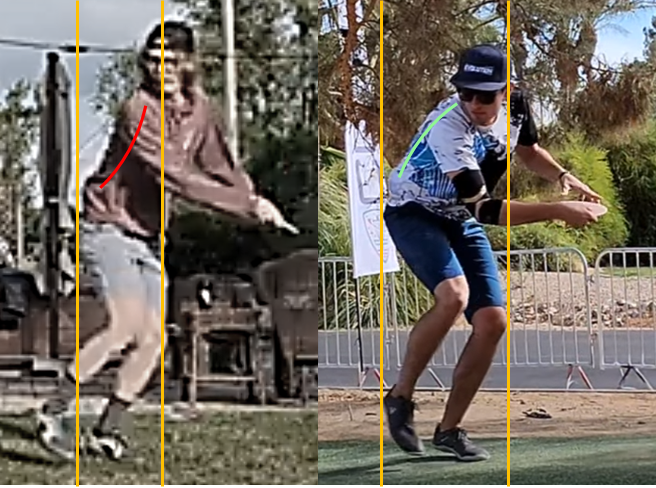It's kind of isolated in that diagram to just legs, a very math major way to do it I guess, assume a sphere with no atmosphere.
I think from my slow motion it's more clear that swinging your femur behind you has a negative impact on your hip position and posture, it's going to pull your hips more rear facing, and keep you from moving downhill. I can't get my mass ahead because my left leg is pulling me back and upward. I just did some walk throughs in my living room with a mega bend left legs and it feels completely different.
I've worked with mathematicians and physicists in my "day job" and enjoy our conversations!
Keep in mind that a problem with making your cow
too spherical is when you are interested in questions where the biology mediates the outputs and the approximation is too coarse. I think one thing I've picked up here at DGCR is:
1. You can
definitely overcomplicate this to your peril, but knowledge used well can help and
2. the closer you can make your move to something like walking, running, dancing, baseball (whatever) that recruits the right stuff, the better.
So maybe let's pick it up with walking and decide how spherical to make your cow or not:
Focus on walking forward - you should notice that your spine and hips are doing something similar to the golfer at the end of this video, just in a smaller "figure 8". You probably have done that without thinking since childhood. Look for (1) the way the pelvis tips back and forth under the spine, (2) how the spine is actually also curving/bending (side bend) in each direction a bit, and (3) how the whole posture "sways" back and forth a bit with the bottom of spine and pelvis swinging under the head
slightly and not unlike a pendulum.
See how the spine "sways" a bit under the head and has some curvature and a little bend in the lumbar region? How the pelvis etc track with it? That's basically want I'm trying to get you to focus on. Again, focus on what's natural in walking first. You might also benefit from messing aroudn with some of the waltz moves in the video here.*
The Power of Posture
This is something that Seppo & Gilbert have in common, but most people have immense trouble doing naturally moving sideways while accelerating. Sidewinder likes to solve it with Hershyzer because it "presets" that aggressive posture and then forces you to get comfortable accelerating out of it leveraged off the rear leg. IMHO learning to do that smoothly from the X-step requires a lot of trial and error and work.
If you see and feel it walking and think you get what's in common with the golf vid, you also know what's different between walking and the backhand and what this guy is doing. He is isolating and stiffening his spine and pelvis so they don't move naturally while his legs do:
This is the difference between how I see "stick figures" in form and fundamental postures compared to your diagram- understanding the legs without understanding the pelvis and spine would give us a weird theory about human motion. You'd maybe learn how to do a sick robot dance, but probably limit your backhand

I would suggest to include the pelvis and shoulders in my mental "wireframe" analysis of pro and our own movement. YMMV.
*Natural motion cue: I've been through the ringer here. I always sucked at running sideways. But I became a decent waltzer, so those cues make sense to me and my body. IMHO figuring out if it's a walk, run, gallop, dance, whatever in transition is important. Baseball people like to 'crow hop', sprinters like to sprint, etc. So maybe use whatever overall best "template" your body has and nudge around in there.
















